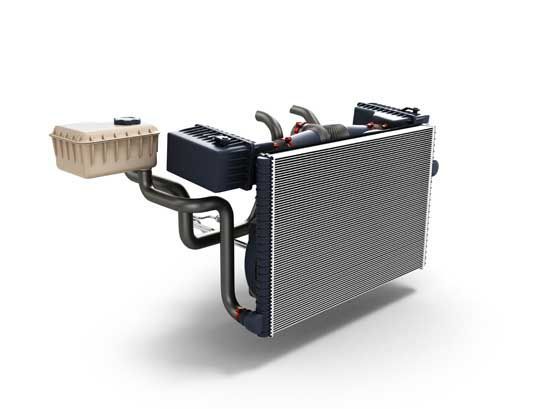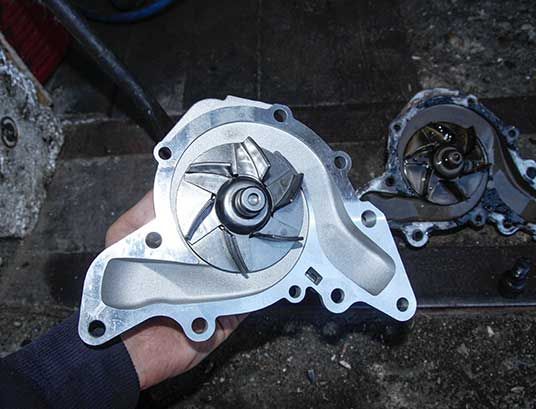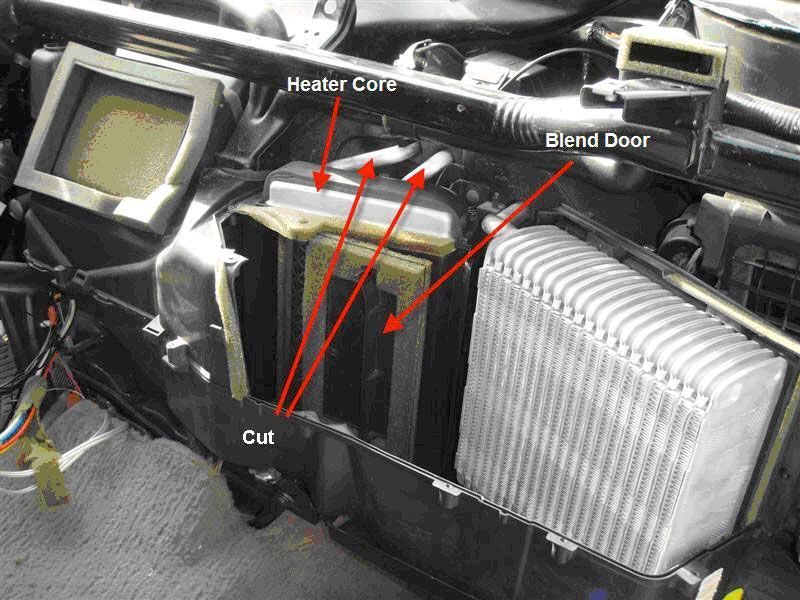Automotive Heater And Cooling System
FEBRUARY 19, 2016

Automotive Heater and Cooling System, It is important to maintain your cooling system, just like every other part of your automobile, which is why we recommend a coolant flush once a year to keep your cooling system working effectively.
Your engine temperature is maintained by the flow of anti-freeze, more commonly referred to as coolant. A coolant flush pushes anti-freeze through your cooling system in order to do a complete cleanse by clearing out all of the old anti-freeze and any contaminants that have built up. When you get a coolant flush, all of the old anti-freeze is evacuated from your system, ensuring that when we put new anti-freeze in, it won’t mix with the old. Lastly, conditioners are added in order to prevent rust and scale deposits, resulting in new longer-lasting anti-freeze.
Every make and model is different, and therefore is on a varied maintenance schedule. Check your owner’s manual to see when it’s time for your vehicle to receive a coolant flush. Usually this flush needs to be performed once a year. If it has been over a year since your vehicle has received a coolant flush.
The Basics
Inside your car’s engine, fuel is constantly burning. A lot of the heat from this combustion goes right out the exhaust system, but some of it soaks into the engine, heating it up. The engine runs best when its coolant is about 200 degrees Fahrenheit (93 degrees Celsius). At this temperature:
- The combustion chamber is hot enough to completely vaporize the fuel, providing better combustion and reducing emissions.
- The oil used to lubricate the engine has a lower viscosity (it is thinner), so the engine parts move more freely and the engine wastes less power moving its own components around.
- Metal parts wear less.
There are two types of cooling systems found on cars: liquid-cooled and air-cooled.
Liquid Cooling
The cooling system on liquid-cooled cars circulates a fluid through pipes and passageways in the engine. As this liquid passes through the hot engine it absorbs heat, cooling the engine. After the fluid leaves the engine, it passes through a heat exchanger, or radiator, which transfers the heat from the fluid to the air blowing through the exchanger.
Air Cooling
Some older cars, and very few modern cars, are air-cooled. Instead of circulating fluid through the engine, the engine block is covered in aluminum fins that conduct the heat away from the cylinder. A powerful fan forces air over these fins, which cools the engine by transferring the heat to the air.
Cooling
The cooling system in your car has a many different hoses. We’ll start at the pump and work our way through the system, and in the next sections we’ll talk about each part of the system in more detail.
The pump sends the fluid into the engine block, where it makes its way through passages in the engine around the cylinders. Then it returns through the cylinder head of the engine. The thermostat is located where the fluid leaves the engine. The plumbing around the thermostat sends the fluid back to the pump directly if the thermostat is closed. If it is open, the fluid goes through the radiator first and then back to the pump.
There is also a separate circuit for the heating system. This circuit takes fluid from the cylinder head and passes it through a heater core and then back to the pump.

On cars with automatic transmissions, there is normally also a separate circuit for cooling the transmission fluid built into the radiator. The oil from the transmission is pumped by the transmission through a second heat exchanger inside the radiator.
Fluid
Cars operate in a wide variety of temperatures, from well below freezing to well over 100 F (38 C). So whatever fluid is used to cool the engine has to have a very low freezing point, a high boiling point, and it has to have the capacity to hold a lot of heat.
Water is one of the most effective fluids for holding heat, but water freezes at too high a temperature to be used in car engines. The fluid that most cars use is a mixture of water and ethylene glycol (C2H6O2), also known as antifreeze. By adding ethylene glycol to water, the boiling and freezing points are improved significantly.
Fluid – Freezing Point – Boiling Point
- Pure Water: 0 C / 32 F – 100 C / 212 F
- 50/50 mix of C2H6O2/Water: -37 C / -35 F – 106 C / 223 F
- 70/30 mix of C2H6O2/Water: -55 C / -67 F – 113 C / 235 F
The temperature of the coolant can sometimes reach 250 to 275 F (121 to 135 C). Even with ethylene glycol added, these temperatures would boil the coolant, so something additional must be done to raise its boiling point.
The cooling system uses pressure to further raise the boiling point of the coolant. Just as the boiling temperature of water is higher in a pressure cooker, the boiling temperature of coolant is higher if you pressurize the system. Most cars have a pressure limit of 14 to 15 pounds per square inch (psi), which raises the boiling point another 45 F (25 C) so the coolant can withstand the high temperatures.
Antifreeze also contains additives to resist corrosion.
Water Pump
A centrifugal pump like the one used in your car.

The water pump is a simple centrifugal pump driven by a belt connected to the crankshaft of the engine. The pump circulates fluid whenever the engine is running.
The water pump uses centrifugal force to send fluid to the outside while it spins, causing fluid to be drawn from the center continuously. The inlet to the pump is located near the center so that fluid returning from the radiator hits the pump vanes. The pump vanes fling the fluid to the outside of the pump, where it can enter the engine.
The fluid leaving the pump flows first through the engine block and cylinder head, then into the radiator and finally back to the pump.
Heating System
You may have heard the advice that if you car is overheating, open all the windows and run the automotive heater with the fan going at full blast. This is because the heating system is actually a secondary cooling system that mirrors the main cooling system on your car.
The automotive heater core, which is located in the dashboard of your car, is really a small radiator. The automotive heater fan blows air through the automotive heater core and into the passenger compartment of your car.
A automotive heater core looks like a small radiator.
The automotive heater core draws its hot coolant from the cylinder head and returns it to the pump — so the heater works regardless of whether the thermostat is open or closed.
For more information on car cooling systems and related topics, check out the links on the next page.

Coolant Leak
Is your radiator leaking? Is your radiator overheating? Are you running low on coolant? If you are experiencing these or any other radiator problems, come into Bullitt Automotive for a Cooling System Diagnostic.
During a Cooling System Diagnostic, one of our experienced tire and automotive service professionals will:
- Pressurize the cooling system to check for leaks
- Perform an engine block test
- Visually inspect for coolant leaks
- Check all radiator hoses
- Check the water pump and belts
- Check the thermostat and cooling fan
Water Pump Problems
Depending on your car, water pumps typically last between 60,000 and 90,000 miles. Radiator hoses can last up to 100,000 miles. Over time, however, both radiator hoses and water pumps wear out and if they are not replaced when needed, serious damage can occur. A collapsed radiator hose, for example, can quickly ruin an engine.
If you experience any of the following problems, bring your car into Bullitt Automotive:
- Your water pump begins to make a squeaking noise.
- Coolant is leaking from your car onto the ground.
- Looking under the hood, you can see coolant – even a trace amount – seeping from the water pump weep hole.
More information on Cooling System and Heater:
More Services we offer:
Loading ...
Missing business hours data / Error occurred while getting the data.
Our Location
Have Trouble Finding Us?
Loading ...
Missing nap lines data / Error occured while getting the data.
